I'm not looking for any code at all, just looking for feedback from the smart people that are generally extremely helpful on this site.
Say I have an image like this:

And I want to have that image on my website, with options for the user to change the eye color and the hair color (either select or radio buttons).
So image would start with blue eyes and I'd have a select list for Eye color with:
Brown Green Blue Hazel
If user selects Green, I'd want the image to now have green eyes.
My question: What do you feel is best way to approach this type of thing? I feel like my options are...
Use an SVG of the face and somehow trigger changes to the paths that makes up the eye color and the hair color. This is doable but maybe overly complicated?
Create separate PNGs for each combo (red hair/blue eyes, red hair/green eyes, etc, etc) and have the image change every time a different selection is made.
Maybe the eyes could be updated using CSS if I make them perfectly round? Guess that isnt feasible with the hair.
Some other approach that I'm probably missing???
Any thoughts? The site could potentially have a lot of traffic, so I am definitely concerned with making whatever approach I use be the least intensive (if possible)